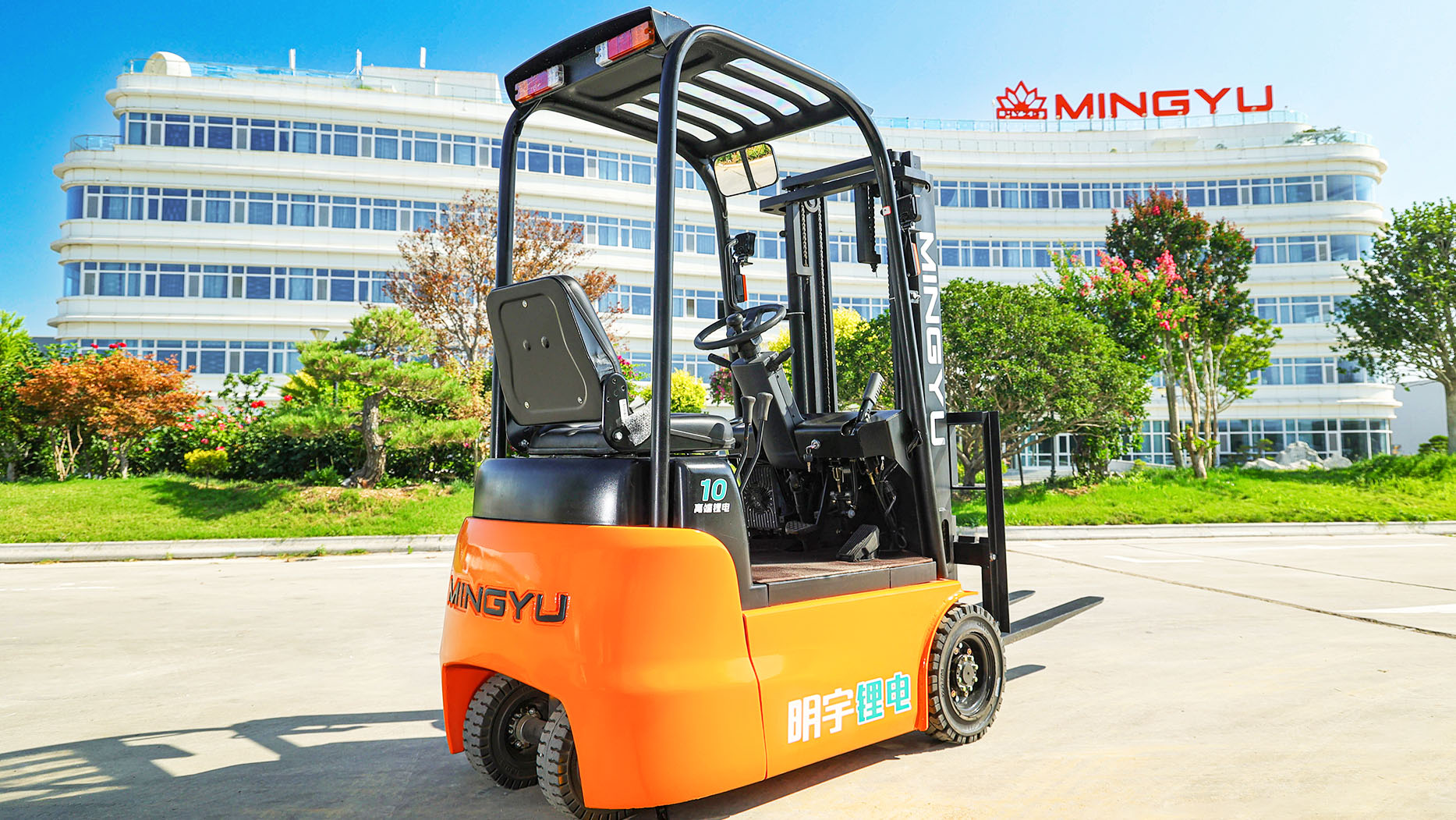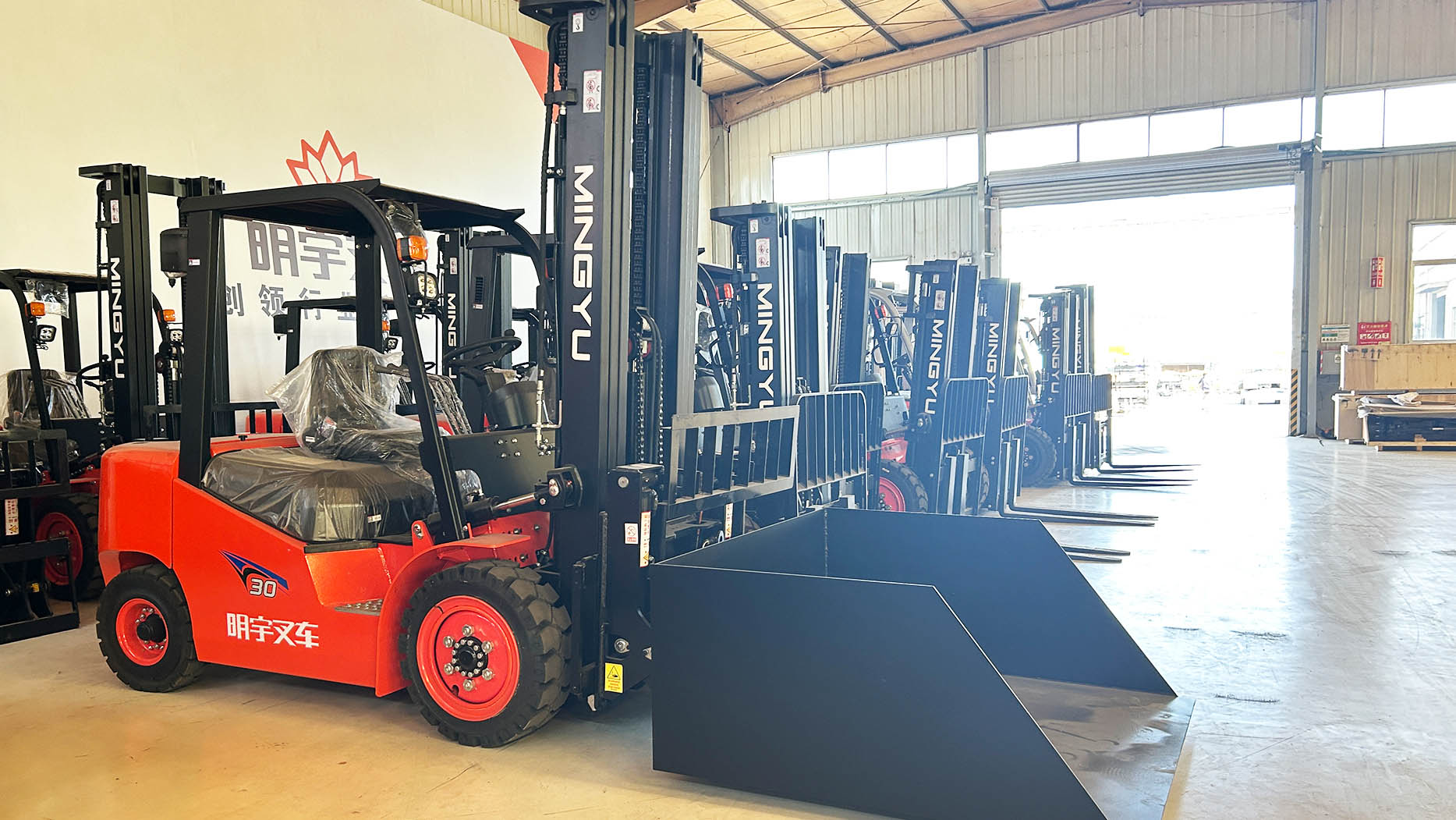When investing in a forklift, one of the most critical considerations beyond initial purchase price and operational efficiency is the expected lifespan of the machine. Businesses weigh many factors, but the question often boils down to: Which lasts longer, a diesel forklift or an electric forklift? The answer isn't a simple one-liner; it's a nuanced discussion influenced by design, maintenance, operating environment, and technological advancements.
Both diesel and electric forklifts are built for demanding industrial applications, but their inherent differences impact their durability and the factors contributing to their longevity. Understanding these aspects is crucial for making a strategic investment that maximizes your return and minimizes downtime over the machine's operational life.
Understanding the Core Components and Their Lifespan
To compare longevity, we must look at the key systems that define each type of forklift:
1. Diesel Forklift:
Engine: The heart of the machine. Diesel engines are renowned for their robustness, high torque, and ability to withstand continuous heavy loads.
Transmission: Translates engine power to the wheels.
Hydraulics: Powers the lifting and tilting functions.
Chassis/Frame: The structural foundation.
2. Electric Forklift:
Electric Motors: Drive the wheels and power the hydraulics. These have fewer moving parts than internal combustion engines.
Battery: The primary power source, typically lead-acid or lithium-ion. This is often the most significant single component impacting long-term cost and "lifespan" in terms of continuous operation.
Control System/Electronics: Manages the power flow and operations.
Chassis/Frame: Similar structural foundation to diesel but designed around battery weight and motor placement.

Factors Influencing Longevity: A Comparative Analysis
Let's break down the variables that determine how long each forklift type typically lasts.
1. Engine/Motor Durability
Diesel Forklift:
Pros: Diesel engines are designed for heavy-duty, continuous operation. They are built with robust components that can withstand high temperatures and sustained stress. With proper maintenance (regular oil changes, filter replacements), a diesel forklift engine can easily last for 10,000 to 20,000+ operating hours, and sometimes significantly more. Their mechanical nature means parts can often be rebuilt or replaced.
Cons: They have more moving parts, requiring more frequent and often complex maintenance. Neglecting maintenance, especially regarding oil quality and cooling, can drastically shorten engine life. Emissions systems (DPF, SCR) on modern diesels also have their own maintenance requirements and lifespan limitations.
Electric Forklift:
Pros: Electric motors have significantly fewer moving parts than internal combustion engines. This means less friction, less heat generation, and inherently less wear. They can be incredibly durable, often lasting well over 20,000 hours with minimal maintenance. The simplicity of the motor design leads to fewer mechanical failures.
Cons: The longevity of an electric forklift is often tied more closely to its battery and electronic control systems than to the motors themselves. Motor windings can degrade over extreme heat or electrical surges, but this is less common than battery issues.
2. Battery Lifespan (Crucial for Electric Forklifts)
Diesel Forklift:
Relevance: Only has a small starting battery, which is a minor factor in overall lifespan.
Electric Forklift:
Relevance: The battery is the single most critical consumable component impacting the overall effective lifespan and cost of an electric forklift.
Lead-Acid Batteries: Typically last for 1,500 to 2,000 charge cycles, which translates to 5-7 years with proper charging and maintenance (e.g., watering, equalization). Improper charging, over-discharging, or lack of watering can drastically reduce this. Replacing a lead-acid battery is a significant expense (often 20-30% of the original forklift cost).
 Lithium-Ion Batteries: Offer superior longevity, often rated for 3,000 to 5,000+ charge cycles, translating to 8-10+ years of life. They are more forgiving with opportunity charging and require no maintenance. However, their initial cost is substantially higher than lead-acid.
Lithium-Ion Batteries: Offer superior longevity, often rated for 3,000 to 5,000+ charge cycles, translating to 8-10+ years of life. They are more forgiving with opportunity charging and require no maintenance. However, their initial cost is substantially higher than lead-acid.
Impact: The need for battery replacement can make an otherwise functional electric forklift economically unviable if not planned for. The "lifespan" of an electric forklift often implicitly includes the lifespan of its battery.
3. Maintenance Regimen
Diesel Forklift:
Impact: Requires more frequent and comprehensive preventative maintenance (oil changes, filter replacements, fuel system checks, cooling system maintenance). Diligent adherence to these schedules is paramount for reaching maximum engine life. Neglect will severely shorten its lifespan.
Electric Forklift:
Impact: Requires less mechanical maintenance (no oil changes, fuel filters, spark plugs). However, proper battery maintenance (for lead-acid), regular checks of electrical connections, and ensuring the control system is healthy are vital. While less frequent, specific electrical system knowledge is needed.
4. Operating Environment
Diesel Forklift:
Impact: Designed for rugged outdoor and dusty environments. Their robust construction and powerful engines allow them to withstand harsh conditions, which contributes to their longevity in these specific settings. Proper air filtration and cooling system maintenance are crucial in dusty environments.
Electric Forklift:
Impact: Excel in clean, indoor environments. Exposure to extreme temperatures, dust, or moisture can negatively impact sensitive electronic components and batteries, potentially shortening lifespan. While some are weather-sealed, they are generally less robust for truly harsh outdoor conditions than diesel models.
5. Application and Usage Intensity
Diesel Forklift:
Impact: Thrives in heavy-duty, continuous applications (e.g., loading large trucks, working multi-shifts, moving heavy materials like a forklift 3 ton diesel). Their design handles sustained stress well. Overloading or constantly pushing beyond limits will reduce lifespan.
Electric Forklift:
Impact: Excellent for consistent, repetitive tasks, especially in quieter indoor settings. Can handle multi-shift operations with battery swapping or opportunity charging (for lithium-ion). Constant deep discharging of lead-acid batteries, or operating beyond their thermal limits, will shorten battery life.
6. Technological Advancements
Diesel Forklift: Modern diesel forklift engines have improved efficiency and durability due to better materials, fuel injection systems, and emission controls. These advancements can extend their operational life further.
Electric Forklift: Rapid advancements in battery technology (especially lithium-ion) and motor efficiency are significantly improving the lifespan and performance of electric forklifts, making them a more viable long-term solution than ever before.
 7. Quality of Manufacture
7. Quality of Manufacture
Regardless of fuel type, the quality of the manufacturer plays a huge role. Reputable brands that use high-quality components and adhere to stringent manufacturing standards will naturally produce longer-lasting machines. Brands like MINGYU FORKLIFT (a common name for various Chinese manufacturers like MYZG) are continually improving their build quality and component selection, aiming to offer competitive longevity at a more accessible price point. A forklift 3 ton diesel from a quality manufacturer, regardless of origin, will generally outlast one from a lower-tier brand with inferior components.
The Verdict: It's Not Just "Which," But "How" and "Where"
When properly maintained and operated within their intended environment and duty cycle:
Diesel Forklifts often exhibit a longer "engine/chassis" lifespan in terms of raw operating hours due to the inherent durability and reparability of their mechanical systems. It's not uncommon for a well-maintained diesel forklift to exceed 15,000-20,000 hours, with major overhauls extending this significantly.
Electric Forklifts have extremely long-lasting motors and control systems, but their effective longevity as a complete, efficient unit is heavily dependent on the lifespan and replacement cost of their batteries. If the battery is considered a consumable, then the effective lifespan of an electric forklift as a continuous operational unit might be aligned with its battery cycles (5-10 years), after which a major investment is required. However, the rest of the machine (motors, chassis) can last much longer.
Therefore, the question shifts from "Which lasts longer?" to "Which offers better long-term value for my specific application?"
For heavy-duty, multi-shift outdoor operations where robust power and constant use are paramount, and emissions are managed, a diesel forklift might offer a longer life without a major "consumable" replacement like a battery. The upfront cost of a diesel forklift, combined with its enduring engine life, can present a strong long-term value.
For indoor, clean operations where emissions and noise are critical, an electric forklift offers a very long-lasting solution if the battery management is excellent or if you invest in durable (and more costly) lithium-ion batteries. The lower daily running costs can offset battery replacement over time.
For instance, a MINGYU FORKLIFT forklift 3 ton diesel model, if maintained meticulously, can be a workhorse for many years, offering immense durability in outdoor settings. Similarly, a well-cared-for electric MINGYU FORKLIFT model will also provide years of reliable service, provided its battery is properly managed.
In conclusion, both diesel and electric forklifts are designed for longevity. The diesel forklift excels in sheer mechanical endurance in tough conditions, while the electric forklift offers inherent motor durability, with its overall functional lifespan often determined by battery health and replacement cycles. The true measure of longevity comes down to proper selection for the application, consistent preventative maintenance, responsible operation, and the quality of the machine from manufacturers like MINGYU FORKLIFT. By focusing on these factors, businesses can ensure their chosen forklift delivers maximum productivity and value throughout its considerable lifespan.
Post time:Jul.07.2025
